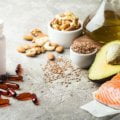What’s the distinction between grilling with charcoal as opposed to timber? Both make fire, and flame-kissed meals are delicious. In step with seven-time global barbecue champion Melissa Cookston, evaluating those fuels is like evaluating apples to oranges. Charcoal is ideal for your regular outside barbeque—aka, for the usage of what the professionals call direct warmth with burgers, hot dogs, steaks, bird wings, corn on the cob, or something else you’ll toss properly to your grill grates.
Wood, however, isn’t in reality possible for direct warmth grilling. “When you’re using, you have a number of the fflamesuse the wooden catches on the fireplace and combusts,” Cookston defined. These United States make the temperature of a wood fire hard to manipulate without a huge and specific type of grill designed for wood fires, meaning your burgers would emerge as a little less flame-kissed and more charred to a crisp.
But simply because she doesn’t endorse lighting up a campfire on your Weber doesn’t imply timber and doors cooking can’t cross hand-in-hand. “I’m an outdoor cooking woman, and there’s nothing like cooking with timber,” Cookston stated. In Barbecue International, wood is the most critical and nuanced aspect of smoking, a cooking technique that uses indirect warmness over many hours.
And even if you don’t have a smoker or a wooden fireplace grill, you may still experiment with wood smoke while grilling, using techniques like timber chips and region fires. Before we get into a way to use timber and charcoal for grilling, it’s worth backing up and talking about what those materials are to understand how to heat and taste once you are mild enough to fit.
Grilling with Wood
Wood is technically a tree’s xylem or vascular device that transports water and other vitamins from the roots to the leaves. When cooking, you can’t just take hold of any old log, chop down a tree, and throw it to your smoker or grill. Fresh reduced timber has exceptional water if you want to steam it as it burns and launches off-tasting smoke. For this purpose, firewood and wood for cooking are commonly “seasoned” or air-dried for at least six months. It would help if you also were careful to by no means use any timber that’s moldy or has been dealt with for cooking because it may release dangerous materials into your meals.
Wood intended for cooking typically comes in 3 length options: wooden chips, chunks, or logs…even though chips or chunks are usually used for outside cooking (save the logs for a large open-pit barbeque or the campfire). Hardwoods like hickory or cherry are generally desired for their tighter cell shape, making them burn slower than softer woods like pine, which also supply sooty smoke that received’t flavors tremendously in your meals.
Grilling with Charcoal
Charcoal is, in reality, crafted from wood that’s been burned in a low-oxygen oven or silo until it’s essentially simply natural carbon, also known as char. According to Meathead Goldwyn’s in-depth clarification of the technology of charcoal, it was given extra potential power than wood and “burns consistent, warm, and produces much less smoke and less risky vapors.”
Other Options
Just like timber, there are alternatives to choosing your charcoal, too. Briquettes, which most experts propose for the informal barbeque-er, are commonly made of charcoal and occasionally an added binder like cornstarch and other substances, sawdust, and sodium nitrate. (Some brands, including Weber and B&B briquettes, only use hardwood.) Thanks to their uniform length, they burn continuously; however, some claim they produce an ashier burn, cap out at a lower heat than lump charcoal.
Lump, alternatively, is simply hardwood burned right down to charcoal without components or shaping. There are also even more specific options out there, like Japanese Binchotan, activated charcoal that produces a completely excessive warmness with nearly no smoke, and coconut charcoal, which is made from pressed coconut shells that are burned right down to char in preference to hardwood.
Grilling with Charcoal & Wood
Grilling with charcoal will be enough for maximum lay human beings or backyard barbeque fanatics. Depending on your cooking, you may set up your charcoal for direct warmness grilling or create two zones for direct and indirect warmness. (Not sure what this means? Check out this Chowhound video, which will educate you.
What approximately fuel grills, you ask? According to Crookston, fuel grills have their time and vicinity as a quick and easy outdoor cooking device. However, they don’t evaluate the results you get from charcoal. “Time is something I don’t have much of,” she stated. “Pushing a button and having a reachable gasoline grill is convenient. But the taste of charcoal is something that I crave. There’s nothing like a burger or steak cooked over charcoal. You get a very different texture.” If you’re a fan of comfort, test out CNET’s Best Gas Grills for the 2019 round-up.
There are a few alternatives for the one’s lifeless set on grilling with wooden best. “If you’re thinking about grilling with wood, what we typically do in the South is find a burn barrel to burn that wood all the way down to what we name embers,” Cookston stated. “Which is basically what the charcoal manner is. Or you may use a Santa Maria grill, which we don’t have many inside the South. I changed into first delivered to those out in California.” These more massive grills have a grate raised or lowered to preserve the beef off the flame.
Or you could make it like Cookston and use a zoning installation to add a piece of wood flavor to an ordinary vintage charcoal grill. “Occasionally, I’ll take a timber chew and place it over to the facet,” she said. “You’re creating a two-quarter fire in which you’re cooking your meat on one aspect, and also you put that timber chew over to the alternative side of your grill so that you’re now not getting the flare-up to your meat.” Since you’re no longer cooking without delay over the wooden, she emphasizes that you’ll handiest get a minimum amount of taste from the wooden bite using this technique.
There’s also the choice of adding timber chips on your charcoal grill—some fuel grills even include a pan to put timber chips in—but Cookston cautions that you don’t get that smoky flavor you might be imagining. “Chips simply combust and burn so rapidly which you’re just no longer going to get that first-rate smoky flavor,” she stated. “You can also get a touch; however, you’re just no longer going to get that smoky flavor you are probably deliberating.”












